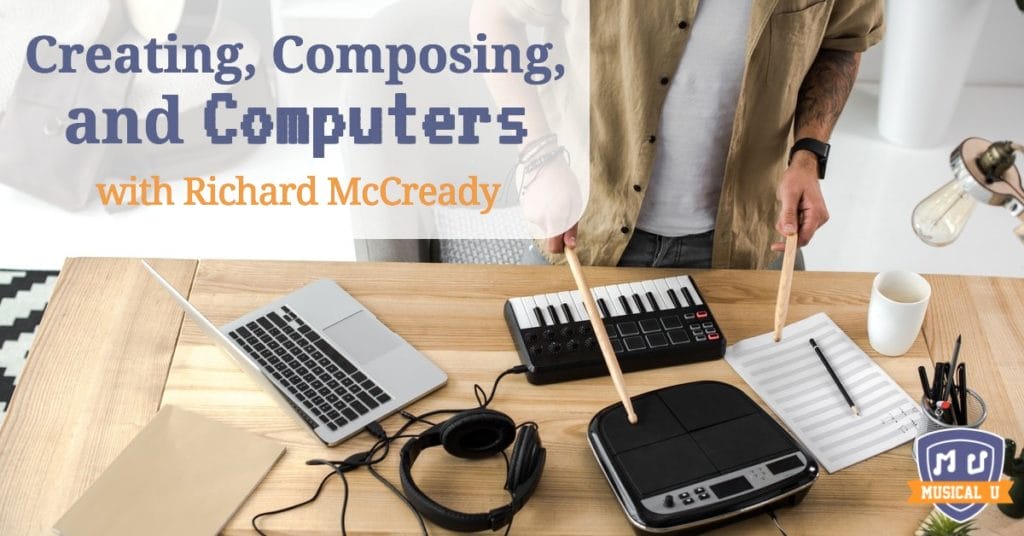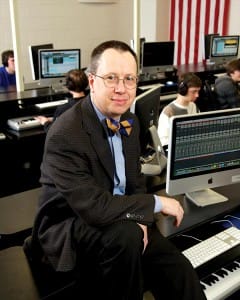In spite of technology advancing by leaps and bounds, much public school music curricula remains centered around traditional school band and orchestra programs, and most of the learning remains focussed on reproducing someone else’s music, with little emphasis on the student creating original music.
As a result, music class, which should be creative and hands-on, can become a routine of memorization and regurgitation. Understandably, this turns a lot of people away from music at a young age.
The answer? Make music a vehicle of self-expression by creating opportunities for students to create and compose.
Given its accessibility, ease of use, and creative potential, what better way to do this than with music software and technology?
Richard McCready’s fascination with music technology and his desire for youth to experience technology-aided composition led him to create the Music Technology program at his school, where students could create music with the help of software and computer-specific techniques. The program was a resounding success, and soon expanded from one school to the entire district, with Richard’s pedagogical ideas being embraced by students and educators alike.
Richard sat down with Musical U to share the incredible story of the Music Technology program’s conception and execution, how it differs from traditional teaching methods, the innumerable benefits it has for young musicians, and how self-taught students can use the philosophy behind the program to further their own learning and stay inspired and creative.
Q: Hi Richard, and welcome to Musical U! Tell us about your musical background, and your relationship to technology in music.
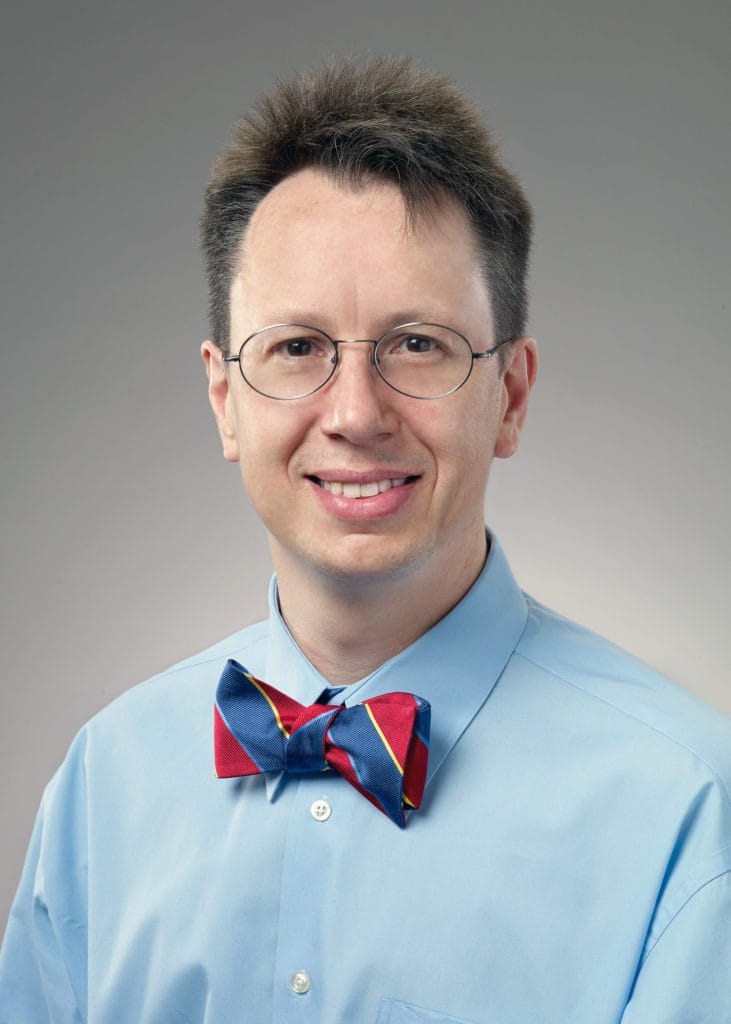 My background is primarily in performance. I was a boy chorister at Belfast Cathedral, and also played E♭ Bass with Laganvale Band. Singing and Brass Banding were my musical identity as a teenager. At school, my two best subjects were music and computer science, and I faced a difficult choice in my Upper Sixth year of which subject to study at the university level.
My background is primarily in performance. I was a boy chorister at Belfast Cathedral, and also played E♭ Bass with Laganvale Band. Singing and Brass Banding were my musical identity as a teenager. At school, my two best subjects were music and computer science, and I faced a difficult choice in my Upper Sixth year of which subject to study at the university level.
I chose to go to the Royal Northern College of Music to take a tuba performance degree, but kept my computer interest up as a side hobby, and I took every electronic music course I could. At the time, MIDI was in its infancy, and it was fascinating to me to code or record music into a computer and hear it back. There was such a magic about it that I continued to develop my music tech skills as the software and hardware developed. In that way, music tech morphed from being a pastime into my full-time gig.
Q: You then spread your love of music technology to your students. How did you go about implementing this teaching in schools, and how did students respond?
Since I enjoyed music technology myself so much in school and college, I instinctively felt it would be something that students would enjoy.
When I began my teaching career in England in 1990, there were few to zero resources for computer-assisted music, since any computers in schools were automatically reserved for computer classes and sciences. I was very frustrated at not being able to get children composing and creating in the way I wanted to, so decided to leave that job after just two years. I moved to the U.S. in 1992 to pursue my Master’s degree, and I secured a part-time job teaching recording technology in a private high school, where I encouraged students to sequence MIDI using synthesizers, drum machines, and WinJammer.
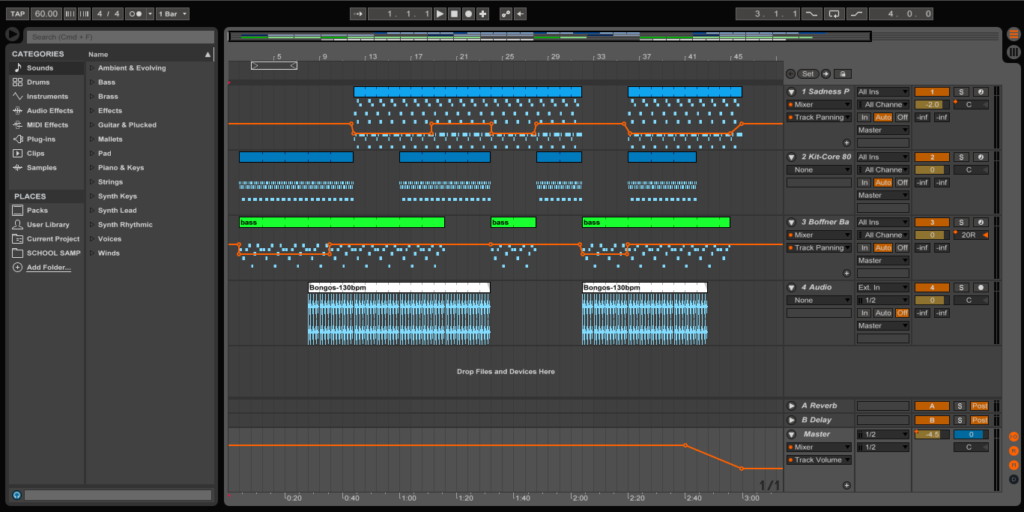
MIDI arrangement of “Grave(s)yards”, by Jackson Graves
My first full-time job after completing my Master’s was in a middle school (ages 11-14). I noticed that it is a vital age where students can either get really turned on to music, or can lose interest if the teaching material is uninspiring – it is crucial to maintain students’ interest in the arts during these adolescent years, or they will lose it, possibly forever. In 2003, I obtained a grant for six refurbished Windows computers and bought six licences of Super Duper Music Looper (still the greatest ever music program for kids).
Students in my school had never composed in music class before, and they took to it so well. They loved it and asked for Super Duper in every class, and their composition skills really developed as I then moved them into Sony Acid and Sibelius. Music class became the most exciting subject in every student’s day – kids were sprinting down the corridors to get started on their compositions.
Soon I was teaching summer classes in sequencing, recording, and notation, so that students from other schools could enjoy learning those skills, and I was even training other district teachers in developing composition units through Music Tech.
Q: That’s some rapid expansion! How did the program grow from there?
The advent of GarageBand on the Mac meant that every school in our district could begin teaching music tech units. I developed a series of lessons for each teacher, and they really took to it well, even older teachers with just a few years until retirement.
Teachers noticed how responsive the students were to composition and music tech, and we rewrote the music expectations for the music curriculum so that music tech was now a mandatory part of the general music curriculum for students aged 11-14.
”It’s not that students don’t read books today, it’s that they also learn from observation, from experience, from their relationships with adults, and from videos. The lecture and book model is just not going to be as successful in today’s schools.”
With the middle school music tech curriculum up and running, I was asked by my county supervisor to move to a high school, where we would build a brand new 25-station music technology laboratory, and I would begin a high school music technology program and curriculum.
We offered Music Technology as a class for the first time in 2007, and a large number of students signed up, since they had enjoyed the experience in middle school and knew what to expect. I also gained several students who traveled from other schools for individual lessons and mentoring, as they did not have the access to the curriculum at their own schools.
Q: What does the program look like now?
In 2010, the district decided to fund music technology labs in each high school. This meant that each school could now offer Music Technology courses to the students. We built 12 new labs, each with 20 stations, and we wrote a full year-long curriculum using GarageBand, Pro Tools, and Sibelius. Each school designated a music teacher with a strong technology background or interest to teach the course.
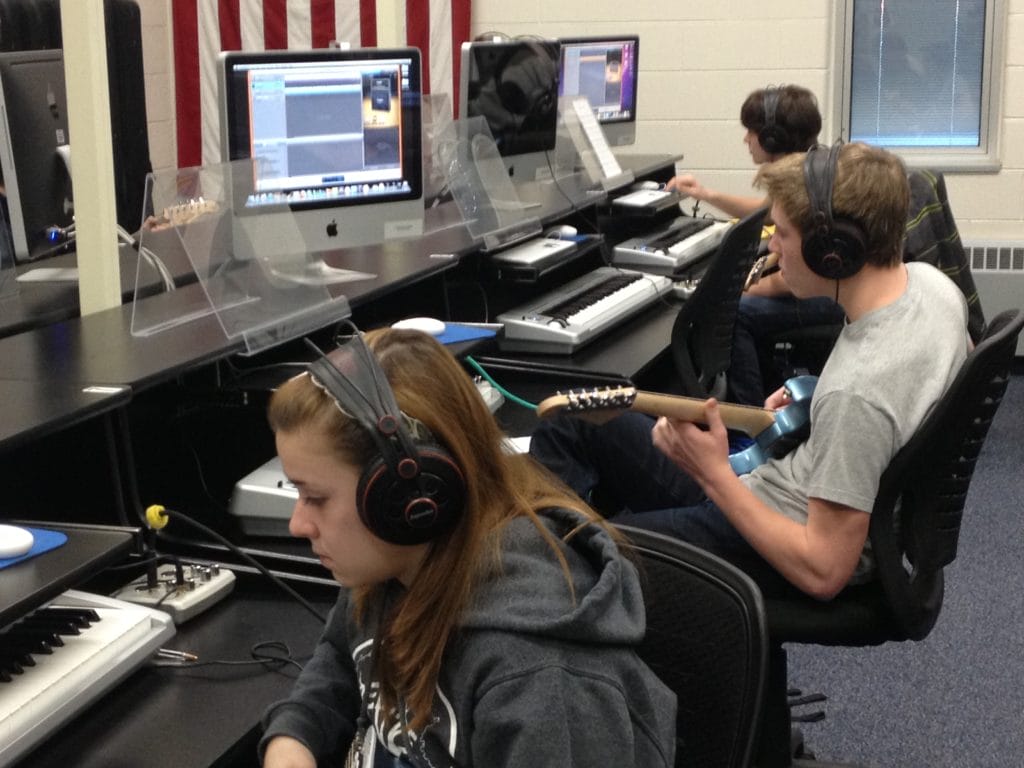 In 2016, we added Ableton Live to our lessons, thanks to generous help from Ben Casey and Dave Hillel from Ableton. We then extended the music technology offerings to elementary schools by inviting elementary music technology expert Amy Burns to our district to run professional development, and we also began piloting Quaver Music.
In 2016, we added Ableton Live to our lessons, thanks to generous help from Ben Casey and Dave Hillel from Ableton. We then extended the music technology offerings to elementary schools by inviting elementary music technology expert Amy Burns to our district to run professional development, and we also began piloting Quaver Music.
Now, music technology is available throughout any student’s school experience. Kids get exposed to music technology through their lessons in elementary school, gain experience through middle school, and move towards enrichment and excellence through high school.
Q: That’s a great progression for learning how to use music software! What are the benefits of teaching musical technology for the students, the teachers, and for the school?
Students learn to connect with their creative selves. Through composing music, they can make an artistic statement of who they are as teenagers and as musicians.
Teenagers are really discovering their identity as they move out of adolescence into adulthood, and music has always been a vital part of that discovery. For my Music Technology students, they can turn what they hear into what they create, and so it gives them a real outlet into self-discovery.
For the teachers, Music Technology is an amazing way to connect with students. When you write a song or a composition, you’re really laying a lot of yourself out there. It’s a very vulnerable moment when a teacher listens to your song. I believe I know my students on a deep level as I have heard their emotions and their joys through their work. It’s one thing to develop a relationship with the student by talking about what they like to watch on TV or what football team they support, but quite another to really connect on a deeper level through their art.
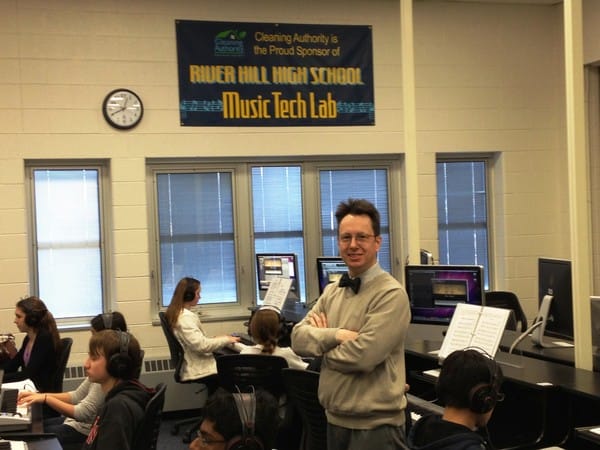 Our school is very proud of the Music Technology department, both with the achievements of our current students, and the continued success of our former students. We have a display case in the school lobby devoted to Music Technology achievements, and we have featured student successes at Board of Education meetings. We have had several articles featuring our program in local and national newspapers and magazines.
Our school is very proud of the Music Technology department, both with the achievements of our current students, and the continued success of our former students. We have a display case in the school lobby devoted to Music Technology achievements, and we have featured student successes at Board of Education meetings. We have had several articles featuring our program in local and national newspapers and magazines.
Students are proud to be known as a part of the Music Technology program, just as much as being part of a band or an athletic team. Giving music a vital visibility has been very important for the students as well as the program.
All students should have an opportunity to study the arts – we know how vital it is to their future happiness to have an enriching arts experience at school. Music Technology has enabled many more students to enjoy that arts experience in their school years.
I believe that actively making art is much more beneficial than passive observation of art, as it encourages children to learn vital adult skills. I hope that my students will be kind adults, understanding of others’ beliefs, passions, and emotions, and I hope that the artistic experience of thinking deeply about the creative process really helps them towards that end.
Q: Beyond merely encouraging them to write their own music, your program has actually brought more students into the live music ensembles – tell us more about that.
When students enjoy their experience in Music Technology class and develop a positive, nurturing experience with the teacher, they often find other ways in which they can take music classes. I have a large number of Music Technology students who choose to take guitar classes when they find out that I also teach that subject. Similarly, if students have a Music Technology class with the choir teacher, band teacher, or orchestra teacher, they are more likely to audition for them and join a curricular or extracurricular ensemble.
Music Technology brings kids into the Music Department, regardless of prior skills or executive ability on an instrument, and they are happy that they can succeed. High school students tend to think themselves out of the arts, by presuming “I can’t sing, therefore I shouldn’t sign up for choir”, where it is our job in the choral class to actually teach them to sing! The Music Technology class breaks that barrier of “I can’t, therefore I shouldn’t”.
Q: Absolutely, and these are wise words of advice to self-taught musicians also – focus on what you can learn, and not just on what you can already do.
Making music on computers can become a solitary activity, but a key part of playing in a live music ensemble is using your aural skills to stay on track and interact with your fellow musicians. Do you teach general aural skills with technology? If so, how?
I encourage deep listening as students develop projects. I want students to really analyse music which we choose to listen to for inspiration, and I have students really squeeze as much as they can out of listening.
 I never let students read scores – it is up to them to work things out with their ears. In my guitar classes I encourage as much playing by ear as possible, and I really want them to get away from reliance on the printed page. Music reading is an important skill, but sadly it is often seen and taught as being more important than aural skills, which I believe is a destructive fallacy in music education.
I never let students read scores – it is up to them to work things out with their ears. In my guitar classes I encourage as much playing by ear as possible, and I really want them to get away from reliance on the printed page. Music reading is an important skill, but sadly it is often seen and taught as being more important than aural skills, which I believe is a destructive fallacy in music education.
In class, we have an exercise where we write a letter to a deaf friend describing the music. It very much helps students turn what they’re experiencing aurally into descriptive musical vocabulary.
Finally, with my projects, effective and excellent mixing is a vital step in the process. The making of music does not end with composition. I encourage my students to listen to their own work as producers and to never be satisfied with a mediocre mix.
Q: You take your students through the whole process of making music – from conception, to composition, to mixing – in a very hands-on way.
Similarly, your methodology is more task-based than linear “book learning”. Why is that important? How does it fit in with today’s learning culture?
Students’ learning methodologies have changed a lot over the last two decades. My pupils have many more methods and resources for learning than when I was in school. It’s not that students don’t read books today, it’s that they also learn from observation, from experience, from their relationships with adults, and from videos. The lecture and book model is just not going to be as successful in today’s schools.
”Belief in the process rather than the product is the key. Keep the students happy and creative. If they are happy, they will be creative. If they are creative, they will be happy.”
Textbooks set you into a predictable curriculum. There is a sequence of events, with outcomes decided before the learning even begins. I’ve written two Music Technology textbooks myself, and they were both out-of-date as soon as they were released onto the market, because the progress of software and hardware is faster than the progress of printed material publication.
I prefer the tangential approach of designing the learning according to my students’ progress and aspirations.
At every stage of my teaching, my assessment of the students is formative – it lets me know what the students need to work on and what skills they wish to learn. A formal textbook might lock me into directions I don’t need to take or avenues which the students are not interested in exploring. Music is a living and growing art – our curricula should also be living and growing.
Q: Well said!
For many self-taught music students, there is no set curriculum – they are their own teacher, and can decide to tweak their learning process and the resources they use as they see fit. What can an independent learner take away as inspiration from reading and learning about your program?
When I first started teaching Music Technology, I was a lone wolf. Nobody else in my school or district was teaching the subject, and I found myself developing my own pedagogy and curriculum simply from gut instinct.
Then, I began to meet other music teachers in other schools and districts through TI:ME (Technology Institute for Music Educators). We all began to realize that each of us had forged our own path in this subject, but each of us had come to the same conclusion: that creativity was the best way to teach the subject.
”Music is a living and growing art – our curricula should also be living and growing.”
I am amazed, even today, that many of my peers in other schools hundreds of miles away all share the same beliefs and core methodologies. Belief in the process rather than the product is the key. Keep the students happy and creative. If they are happy, they will be creative. If they are creative, they will be happy.
Q: That’s very true, and students often respond best to learning when the creative process is just as, if not more important than, the finished product.
How does your program encourage creativity?
Children are born creative, and childhood is about learning through making and experimenting. By high school, students have become inhibited about their creativity, probably because of unfair comparisons of themselves to others.
In our program, every class is creative. By getting kids creating in every class, I try my best to reignite that passion and make kids believe in themselves again. Creativity is a joyful experience, and I teach students never to be afraid to make choices that they believe in.
You can see the incredible results of the program in the portfolios of my students. They are encouraged to outline both the creative and technical process behind the music, from their inspirations and starting point to the challenges they encountered during the process and how they overcame them.
”In this project, there was a ton of tough decisions. The schoolhouse project were challenging because I had to make my own beat from scratch. In the track, I included a Kid Cudi vibe like in the song pursuit of happiness. I think it was cool to be able to find out how to do that loop once I figured out how. I made this choice because once I hit a key on my Push I heard the tone of Kid Cudi song. I felt like it needed to be added.In the arranged mode I mixed a little. I made sure you could hear all the instruments at the same time. Also I made sure nothing was way louder than other loops. I tried to keep it rather simple because it sounded good. In the future when the songs become more complex, I will do more mixing and try to make it sound even better. I felt like a producer, which was a good feeling. I hope to learn more about Ableton so I can make better music and please people with my projects.”
– Anthony Richards II, discussing the process behind his track “Good Stuff”
Q: What are some of your favorite and most inspiring experiences teaching music technology?
My joy is seeing how many times students take a project idea and go way beyond what I was expecting.
My lessons are really fire-starters; by showing students what is possible, and giving them examples of achievement through Music Technology, I hope to inspire them to find their own voice, not blindly replicate someone else’s ideas. Students naturally bring their own skills and experiences to the work, and sometimes they completely surprise me by going way beyond the parameters of the assignment and producing something entirely original and fresh.
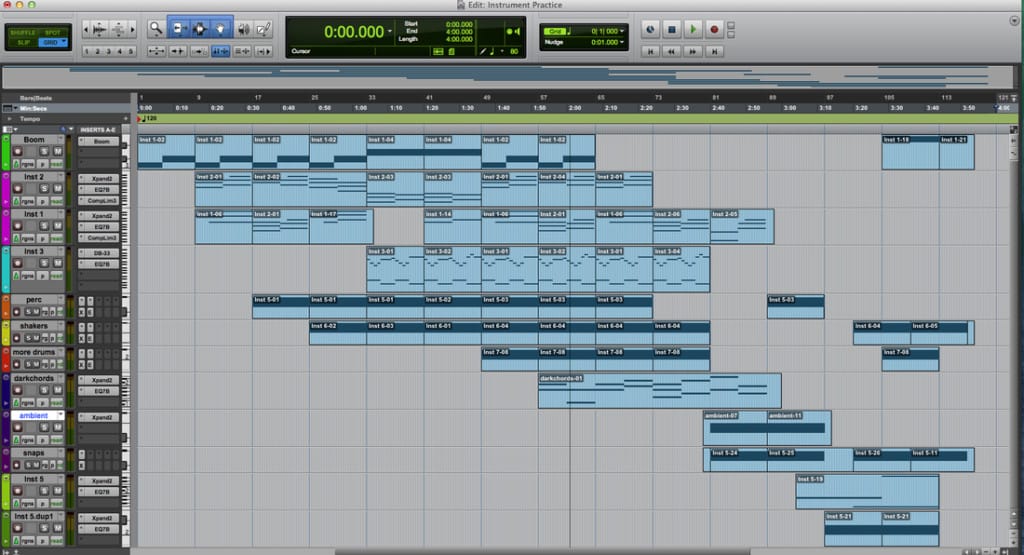
MIDI arrangement of “Shapeshifting Wackiness”, by Julia Swanner
Q: How can your methods spread beyond your own county school system?
I am a committee chair and member of TI:ME (Technology Institute for Music Educators); this organization has been very important in encouraging the use of technology in music classrooms for many years now. One of our major outreaches through TI:ME is running Technology sessions at Music Conferences. Each of the key members of TI:ME is committed to enhancing music education by teaching others, running sessions at the conferences and supporting any interested teachers with mentoring and ideas.
Q: Sounds like the best way to spread your fantastic pedagogical methods – teachers teaching teachers.
Going beyond teaching and learning, how can music technology connect your students with professional musicians and help start careers?
Music Technology gives my students a confidence and vocabulary which often surprises professional musicians that they meet. My students will happily discuss their experiences and passions with anyone, and visitors to my class are often pleasantly surprised with the ease with which my students embrace and speak the common language of musicians.
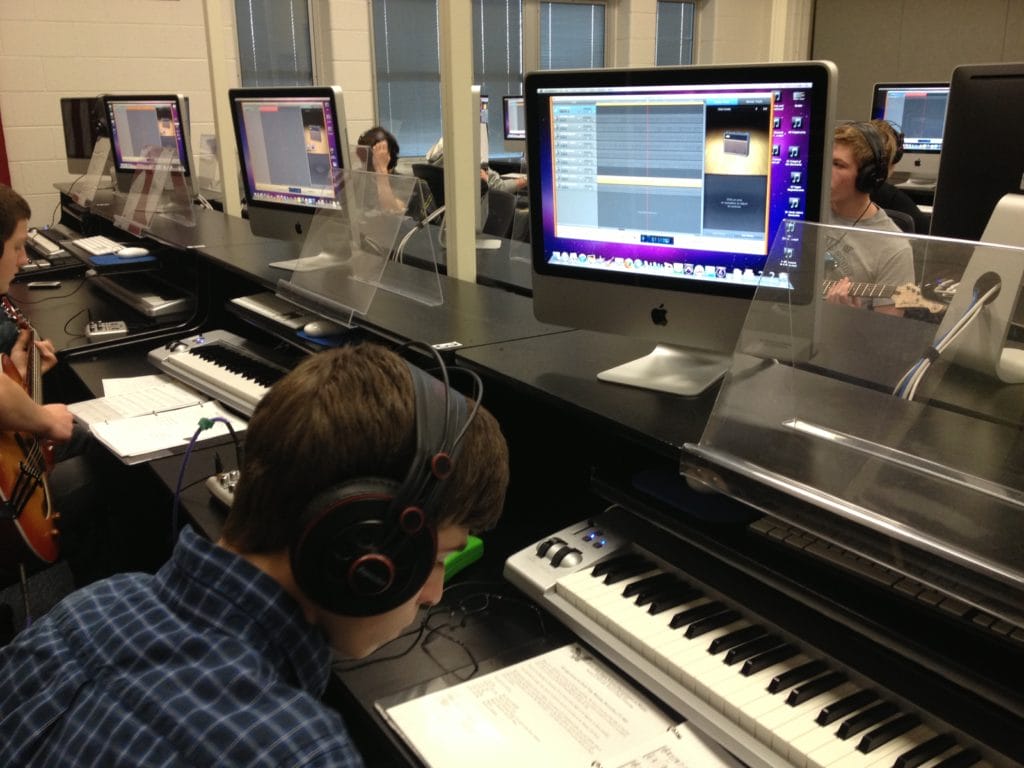
Any of my students who go on to study Music Technology at college find themselves way ahead of their peers, and often find themselves getting employment opportunities and internships in the music world by their first or second year in college. I’ve had many students go to college in New York, Nashville, Chicago, Miami, and other major music hubs, and the students settle instantly into the local music scene. Music Technology has given them the confidence which proves invaluable to them as they set off into their adult lives.
It sounds like your curriculum prepares your students for a musical life ahead – from getting exposed to music in elementary school, to refining their talents in middle and high school, to pursuing higher education in music technology – all through a lens of self-discovery and creativity.
Richard, thank you so much for sharing your wisdom and educational insights with us. Please stay in touch, and keep us posted on your future educational projects!
A New Way of Learning Music
Adding an element of freedom and creativity to music lessons is an excellent catalyst for renewing excitement in young students and seasoned musicians alike.
Composition through technology is the catalyst that Richard uses, but there are countless ways you can apply this concept to your learning – whether by yourself or with a teacher.
Do you primarily play covers? Try a Songwriting Challenge, even if you don’t fancy yourself the type. If you are a technology buff and felt intrigued by the teaching methods Richard talked about, try out a DAW or two – its uses as a compositional tool are limitless.
Finding motivation and passion is one of your biggest priorities – so engage with material that inspires you, gets your creative juices flowing, and makes you happy to be making music.
No matter how you expand your musical scope, remember Richard’s advice: value the process and not just the final result, trust your gut, and don’t forget that creativity and happiness go hand in hand.

